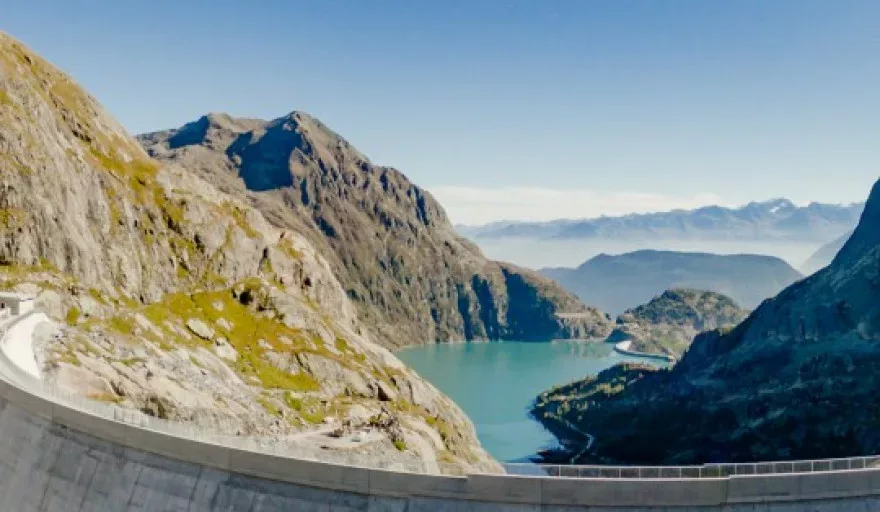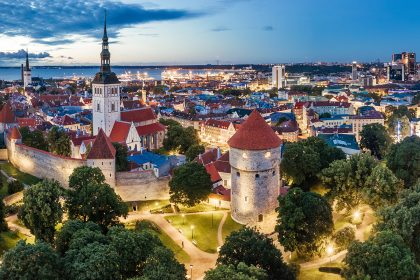As a leading Swiss energy services provider and electricity producer, Alpiq is quite literally at the centre of power in Europe.
- Q&A WITH CHRISTIAN PLUESS, ALPIQ
- Over the past few years, what have been the main continuous improvement strategies and philosophies of Alpiq Group in the field of hydropower?
- In response to what key, ongoing industry trends have these improvement strategies been implemented?
- Can you please talk me through some of the main projects you have undertaken in recent times in the field of hydropower to this end?
- Significantly, from your vantage point, what do you feel are the primary challenges facing Europe from an energy and power perspective at present?
- Ultimately, what do you believe the core strengths of hydropower to be and what role do you feel it could and should play as an energy source in Europe’s future energy supply strategy?
Offering customers continent-wide a comprehensive and refined array of energy management services for sectors including facilities management, transport technology, and industrial power; the Company caters for the entire value chain and subsequently enjoys a front-row seat to all the of major trends dictating not just European, but global energy demands at present.
“Alpiq stands for individually customised, future-oriented solutions that are economical, reliable and sustainable,” explains Managing Director of Hydropower Generation at Alpiq, Christian Pluess. “In Europe, Alpiq leads the way in the marketing of flexibility, both for its own flexible Swiss hydropower portfolio and for its customers’ decentralised energy generation units.
Alpiq is also trading on the European energy exchanges and its portfolio of structured products and services complete the wide spectrum of solutions and services.
Digital solutions and systems from Alpiq optimise the energy flow between energy producers, prosumers and consumers. Thus, the Company makes a significant contribution towards the stabilisation of the electricity grids and increases the energy efficiency of industrial facilities and large-scale consumers.
EME Outlook took the chance to discuss with Pluess the role that Alpiq plays in Europe’s energy sector, as he pinpoints the benefits of hydropower as a flexible and renewable power source.
Q&A WITH CHRISTIAN PLUESS, ALPIQ
Christian Pluess (CP): Hydropower is the origin of Alpiq.
For more than a century, the Company has been using its hydropower plants to secure Switzerland’s energy supply with flexible, climate-friendly and efficient electricity. In Switzerland, Alpiq manages more than a dozen of the most powerful hydroelectric power plants in the country, such as Grande Dixence (2,000 MW) which is the highest gravity dam in the world.
The Alpiq Group is headquartered in Lausanne and is listed on the SIX Swiss Exchange. Approximately 8,500 employees work every day in the service of its customers.
Over the past few years, what have been the main continuous improvement strategies and philosophies of Alpiq Group in the field of hydropower?
CP: The Hydropower business has, over the past several years, been exposed to decreasing market prices. In Switzerland, hydropower also faces an asymmetrical regulation and can therefore not be operated sustainably. As a consequence, we have two main strategic directions for our hydropower unit in the recent years: lean and very cost effective organisation; and optimal use of our very flexible production portfolio.
As Alpiq has a large portfolio of mainly storage plants in various climatic regions of the Swiss Alps, we focused on high availability and low cost operations of our assets, while ensuring the security of people and goods, which remains one of our highest priorities.
In response to what key, ongoing industry trends have these improvement strategies been implemented?
CP: Key trends include decarbonisation, decentralisation, and digitalisation. One example regarding the latter sees Alpiq work on fully digitising the hydro value chain with the goal of further reducing O&M costs through e-monitoring and predictive maintenance; as well as increasing the revenue through further optimisation of the plant’s usage.
Can you please talk me through some of the main projects you have undertaken in recent times in the field of hydropower to this end?
CP: We recently completed a 480MW pumped storage plant – Forces Motrices Hongrin-Léman – in 2016; a €300 million project delivered on time and in budget. In order to further reduce costs without increasing the risks we achieved ISO 55001 (asset management) certification – the first utility in Europe to do so – and we introduced a performance-based maintenance philosophy step-by-step. On this basis the O&M costs could be substantially reduced, while ensuring the security of people and goods.
Looking forward, in 2018 there is one major project in our pipeline: the completion of our biggest project, a 900MW pumped storage project, Nant de Drance, which will be one of the largest in the Alps. The commissioning phase will start in 2019.
Significantly, from your vantage point, what do you feel are the primary challenges facing Europe from an energy and power perspective at present?
CP: In spite of the energy transition, the coal price still determines the wholesale prices for electricity. The costs of Swiss hydropower must compete with the variable costs of the fully written-off coal-fired power plants in Germany, because these are price-determining in Europe. In addition, every European country safeguards “its method” of generating electricity using appropriate interventions; in the meantime, hundreds of protectionist measures are in force within the European Union. In short, the genuinely “liberalised” market does not exist, neither in Europe nor in Switzerland.
Ultimately, what do you believe the core strengths of hydropower to be and what role do you feel it could and should play as an energy source in Europe’s future energy supply strategy?
CP: Hydropower is a flexible and renewable energy source, free of CO2. The flexibility of hydropower plants, in particular pumped storage power stations, is a strong asset for Europe’s security of supply and grid stability.
Pumped storage power stations represent an indispensable complement to the new renewable energies. It is essentially an energy reservoir that can be fed into the grid at any time and offers an immediate and effective solution for the mitigation of energy shortages and the storage of surplus electricity. In the face of the continued growth of fluctuating electricity generation from wind and solar plants, such solutions are indispensable in order to maintain the stability of the Swiss and European grids.



























